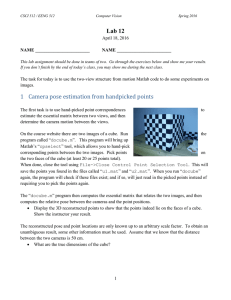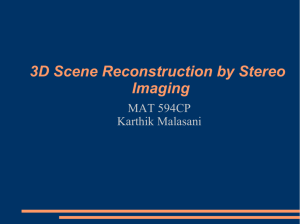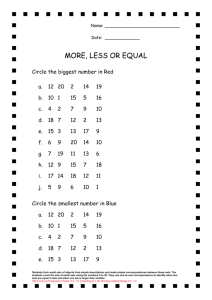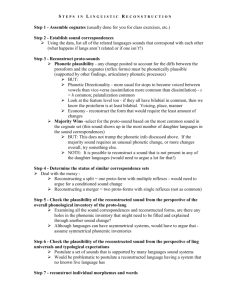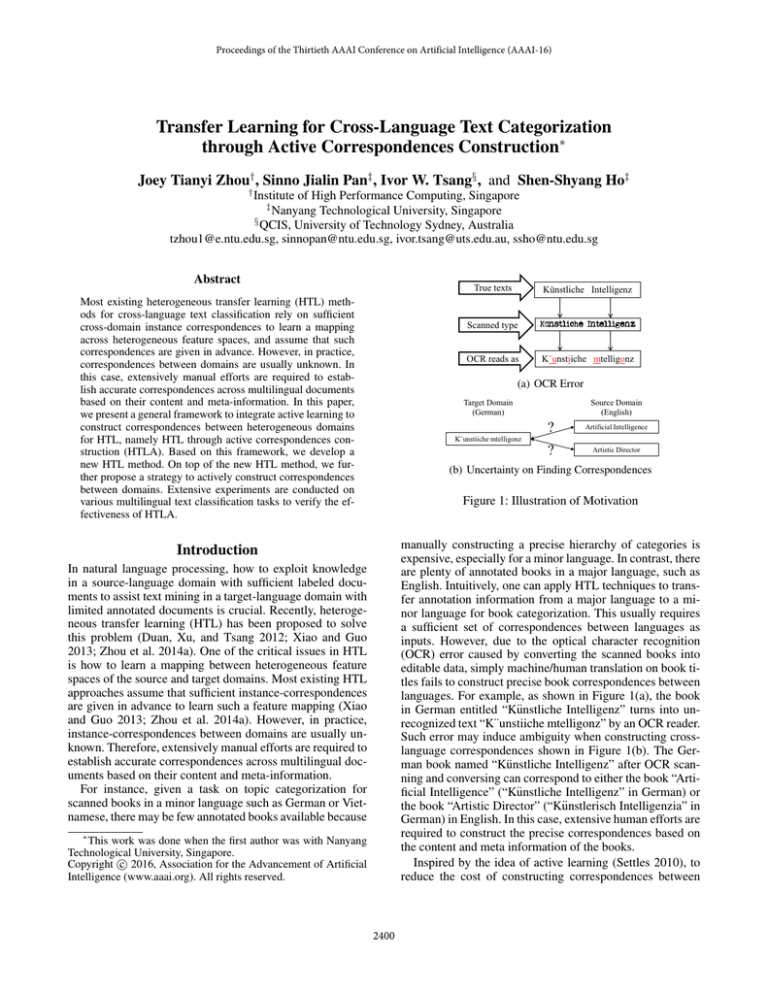
Proceedings of the Thirtieth AAAI Conference on Artificial Intelligence (AAAI-16)
Transfer Learning for Cross-Language Text Categorization
through Active Correspondences Construction∗
Joey Tianyi Zhou† , Sinno Jialin Pan‡ , Ivor W. Tsang§ , and Shen-Shyang Ho‡
†
Institute of High Performance Computing, Singapore
‡
Nanyang Technological University, Singapore
§
QCIS, University of Technology Sydney, Australia
tzhou1@e.ntu.edu.sg, sinnopan@ntu.edu.sg, ivor.tsang@uts.edu.au, ssho@ntu.edu.sg
Abstract
Most existing heterogeneous transfer learning (HTL) methods for cross-language text classification rely on sufficient
cross-domain instance correspondences to learn a mapping
across heterogeneous feature spaces, and assume that such
correspondences are given in advance. However, in practice,
correspondences between domains are usually unknown. In
this case, extensively manual efforts are required to establish accurate correspondences across multilingual documents
based on their content and meta-information. In this paper,
we present a general framework to integrate active learning to
construct correspondences between heterogeneous domains
for HTL, namely HTL through active correspondences construction (HTLA). Based on this framework, we develop a
new HTL method. On top of the new HTL method, we further propose a strategy to actively construct correspondences
between domains. Extensive experiments are conducted on
various multilingual text classification tasks to verify the effectiveness of HTLA.
True texts
Künstliche Intelligenz
Scanned type
OCR reads as
K¨unstiiche mtelligonz
(a) OCR Error
Target Domain
(German)
Source Domain
(English)
?
Artificial Intelligence
?
Artistic Director
K¨unstiiche mtelligonz
(b) Uncertainty on Finding Correspondences
Figure 1: Illustration of Motivation
manually constructing a precise hierarchy of categories is
expensive, especially for a minor language. In contrast, there
are plenty of annotated books in a major language, such as
English. Intuitively, one can apply HTL techniques to transfer annotation information from a major language to a minor language for book categorization. This usually requires
a sufficient set of correspondences between languages as
inputs. However, due to the optical character recognition
(OCR) error caused by converting the scanned books into
editable data, simply machine/human translation on book titles fails to construct precise book correspondences between
languages. For example, as shown in Figure 1(a), the book
in German entitled “Künstliche Intelligenz” turns into unrecognized text “K¨unstiiche mtelligonz” by an OCR reader.
Such error may induce ambiguity when constructing crosslanguage correspondences shown in Figure 1(b). The German book named “Künstliche Intelligenz” after OCR scanning and conversing can correspond to either the book “Artificial Intelligence” (“Künstliche Intelligenz” in German) or
the book “Artistic Director” (“Künstlerisch Intelligenzia” in
German) in English. In this case, extensive human efforts are
required to construct the precise correspondences based on
the content and meta information of the books.
Inspired by the idea of active learning (Settles 2010), to
reduce the cost of constructing correspondences between
Introduction
In natural language processing, how to exploit knowledge
in a source-language domain with sufficient labeled documents to assist text mining in a target-language domain with
limited annotated documents is crucial. Recently, heterogeneous transfer learning (HTL) has been proposed to solve
this problem (Duan, Xu, and Tsang 2012; Xiao and Guo
2013; Zhou et al. 2014a). One of the critical issues in HTL
is how to learn a mapping between heterogeneous feature
spaces of the source and target domains. Most existing HTL
approaches assume that sufficient instance-correspondences
are given in advance to learn such a feature mapping (Xiao
and Guo 2013; Zhou et al. 2014a). However, in practice,
instance-correspondences between domains are usually unknown. Therefore, extensively manual efforts are required to
establish accurate correspondences across multilingual documents based on their content and meta-information.
For instance, given a task on topic categorization for
scanned books in a minor language such as German or Vietnamese, there may be few annotated books available because
∗
This work was done when the first author was with Nanyang
Technological University, Singapore.
c 2016, Association for the Advancement of Artificial
Copyright Intelligence (www.aaai.org). All rights reserved.
2400
domains for HTL, one can actively construct most “informative” and “high-quality” correspondences with limited
budget for effective knowledge transfer across domains. In
this paper, we propose a novel and general HTL framework named Heterogeneous Transfer Learning through Active correspondence construction (HTLA) to address the
problem. In summary, our contributions are two folds:
easy to generalize to other HTL problems. Our proposed algorithm is general for cross-language text classification.
Problem Statement and Formulation
Assume that we are given a set of source-domain labeled
instances, {(xSi , ySi )}li=1 , where xSi ∈ RdS ×1 denotes an
instance and ySi ∈ {1, −1} denotes the corresponding laS
,
bel, a set of source-domain unlabeled instances {xSi }ni=l+1
and a set of corresponding pairs between the source and
nC
C
C
dS ×1
target domains, {(xC
and
Si , xTi )}i=1 , where xSi ∈ R
C
dT ×1
xTi ∈ R
are source- and target- domain instances respectively. Note that nC can be 0 initially. The goal is to
make predictions on another set of target-domain unlabeled
T
. For simplicity, the matrices of sourceinstances {xTi }ni=1
domain labeled, unlabeled, and all instances are denoted by
XSL ∈ Rl×dS , XSU ∈ R(nS −l)×dS and XSA ∈ RnS ×dS ,
respectively, where each row corresponds an instance. Similarly, the matrix of target-domain unlabeled instances is denoted by XT ∈ RnT ×dT , and the corresponding instances
in the source and target domains are denoted by XSC ∈
RnC ×dS and XT C ∈ RnC ×dT respectively.
As our proposed method is based on matrix completion,
we first construct a unified instance-feature matrix for all the
instances from the source and target domains as follows,
• We present a novel framework to actively construct correspondences between heterogeneous domains for effective
knowledge transfer.
• We present a new correspondence-based method for HTL
through matrix completion with a regularization term on
distribution matching. The encoding of the regularization
into matrix completion significantly improves the prediction performance of HTL, but introduces additional challenges in optimization. We propose an effective approach
to solve the optimization problem.
Related Work
Different from homogeneous transfer learning, which aims
to transfer knowledge across domains that are of homogeneous features (Pan and Yang 2010; Daumé III 2007), heterogeneous transfer learning (HTL) is proposed for heterogeneous domains with non-overlapping features. Most existing HTL methods focus on two settings. One assumes a few
target-domain labeled data be available in training (Kulis,
Saenko, and Darrell 2011; Duan, Xu, and Tsang 2012;
Wang and Mahadevan 2011; Zhou et al. 2014b), while the
other assumes sufficient instance-correspondences between
heterogeneous domains be available. In the latter setting,
which is our focus, Dai et al. (2008) proposed a probabilistic model to construct a “translator” to build connections
between instances from different domains. Recently, Xiao
and Guo (2013) applied an existing matrix completion technique to HTL. Specifically, in their proposed method, some
instance-correspondences between domains are assumed to
be given in advance, and the goal is to reconstruct “missing correspondences” for all the instances observed in either the source or target domain. However, their proposed
method does not consider distribution distance between domains when reconstructing the corresponding instances. In
this paper, we propose a more general matrix completion
method for HTL by taking distribution distance minimization into consideration. Moreover, we propose a framework
to actively construct instance-correspondences for HTL.
There has been research work on combining active learning and transfer learning to actively query instances for labels in the target domain by leveraging knowledge from the
source domain (Shi, Fan, and Ren 2008; Rai et al. 2010;
Chattopadhyay et al. 2013; Wang, Huang, and Schneider
2014). However, most of them are focused on homogeneous
transfer learning. The most related work to ours on actively
constructing correspondences between heterogeneous domains for knowledge transfer is (Zhao et al. 2013), where an
active learning strategy was proposed to selectively identify
user/item correspondences between different recommender
systems. However, their proposed method is specific for collaborative filtering in recommender systems, which is not
M=
XS
XT
⎡
⎤
XSA
= ⎣ XSC ⎦ =
XT
XSA
XSC
0nT ,dS
0nS ,dT
XT C
XT
,
(1)
where XS = XSA XSC , and the matrices 0nS ,dT and
0nT ,dS denote the missing correspondences of XSA and XT
in the target domain and the source domain, respectively. We
further define nS = nS + nC .
We aim to recover the missing entries in M to obtain
the “ground-truth” matrix X. Based on this matrix, we further apply a singular value decomposition (SVD) on X to
project both the source and target domain data to a common latent space spanned by the top r singular vectors, i.e.,
X = Ur Σr Vr , and let Z = XVr . Finally we train a classifier on the first l rows of Z, i.e., the new feature representations of the source-domain labeled data, and test on the last
nT rows of Z, i.e., the new feature representations of the
target-domain test data.
Matrix Completion for HTL
Recall that given partially observed cross-domain instancesfeature matrix M, we seek to estimate the missing values of
the matrices 0nS ,dT and 0nT ,dS (i.e., to estimate the missing
correspondences of XSA and XT in the target domain and
the source domain respectively) by recovering the groundtruth matrix X that fulfills the following properties:
• X is sparse. Motivated by a number of applications, such
as cross-language text categorization, a feature representation for an instance is sparse. Thus, the L1 norm · 1
can be used to encourage sparsity.
• X is low rank. In many applications, high dimensional
data are controlled by a few latent factors. Thus, the nuclear norm · ∗ can be used to regularize its rank.
2401
HTL through Active Correspondences
Construction
The HTL problem can then be transformed into a standard
matrix completion (MC) problem (Xiao and Guo 2013) as,
1
min (X − M) ◦ P2F + γX∗ + μX1
X 2
In this section, we present the overall framework of Heterogeneous Transfer Learning through Active correspondences
construction (HTLA) as described in Algorithm 1. To begin with, we randomly construct several correspondences,
which are denoted by a set C(1) , to form the matrix M in (1),
and apply the proposed HTL method DMMC to recover an
initial X. After that, we iteratively construct cross-domain
correspondences by updating the set C(t) , where t is an index of each iteration, based on the proposed active correspondences construction strategy ActiveLearn(·), and reapply DMMC to recover a more precise X with the updated
C(t+1) until a stopping criterion is met. In the following sections, we introduce the DMMC method and the strategy of
active correspondences construction in detail.
(2)
where M is an observed matrix, P is an indicator matrix
with Pij = 1 if (i, j) is observed, otherwise 0, the operator
◦ is the Hadamard product, and γ, μ are tradeoff parameters
for the nuclear norm ·∗ and the L1 norm ·1 , respectively.
Maximum Mean Discrepancy
Maximum Mean Discrepancy (MMD) (Borgwardt et al.
2006) is a nonparametric measure to estimate the distance
between distributions, which is expressed as follows
2
1
1 Dist(XS , XT ) = φ(xSi )−
φ(xTj )
, (3)
nS
nT
H
Algorithm 1 Framework of HTLA
Initializations: Randomly construct k correspondences
C(1) to form the matrix M, and set X(1) = M.
for t = 1, 2, ..., T do
1: X(t+1) = DMMC(X(t) ).
2: Set C(t+1) = ActiveLearn (X(t) , C(t) ).
3: Update X(t+1) based on C(t+1) , and set t ← t + 1.
end for
Return: X ← X(T +1)
Recover low-dimensional representations: apply a
SVD on X, X = Ur Σr Vr , and use the top r singular
vectors to construct a projection, Z = XVr .
where φ(·) is a feature mapping to a Hilbert space. It can be
rewritten in a more compact form:
(4)
Dist(DS , DT ) = tr(KX L),
KXS,S KXS,T
where KX =
, which is a kernel matrix
KXT ,S KXT ,T
induced
by the feature mapping function φ(·), and L =
LS,S LS,T
, where Lij = 1/(nS )2 if xi , xj ∈ XS , Lij =
LT,S LT,T
1/(nT )2 if xi , xj ∈XT , otherwise Lij = −1/(nS nT ).
Distribution Matching based Matrix Completion
The proposed optimization problem, Distribution Matching
based Matrix Completion (DMMC), is expressed as follows:
min
X∈K
s.t.
Optimization for DMMC
In this section, we propose an efficient algorithm to solve the
optimization problem (5) based on stochastic sub-gradient
descent (SSGD) with projection on the feasible space K.
The reason that we adopt SSGD is its desirable advantages for large-scale optimization problems (Bottou 2010;
Avron et al. 2012). Moreover, its promising results on nonlinear optimization problems have been shown by other researchers (Wang, Crammer, and Vucetic 2012). Specifically,
our proposed approach consists of two parts: 1) SSGD for
MC, and 2) projection onto K.
1
(X − M) ◦ P2F + γX∗ + μX1
2
K = {X|tr(KX L) < λ} ,
(5)
F (X) =
where λ is a constant to constrain the distance between
the source and target domain data, XS and XT , measured
by MMD. Note that the difference between (5) and (2) is
the additional constraint based on MMD. As shown in experiments, by adding the MMD-based constraint, one can
achieve much better performance on HTL problems. This
is because the MMD-based regularization term captures the
information on distribution difference. In contrast, the rank
and sparsity constraints fail to capture such information. For
example, a block diagonal matrix satisfies both low rank and
sparsity constraints. However, such recovered matrix is not
useful for HTL problems since it fails to recover the missing
correspondences. Note that obtaining the solution of the optimization problem (5) is nontrivial because the additional
MMD-based regularization makes the problem much more
difficult to solve. Specifically, by adding the MMD-based
regularization, the optimization problem (5) is nonconvex,
which cannot be solved by any existing MC algorithms such
as singular value thresholding (SVT) (Cai, Candès, and Shen
2010). Therefore, a new approach needs to be developed,
which is discussed in the next section.
SSGD for MC The sub-gradient of F (X) in (5) w.r.t X
can be written as
∂X1
∂X∗
+μ
+ (X − M) ◦ P, (6)
G(F (X)) = γ
∂X
∂X
∗
where ∂X
= UV + H, and UΣV is a compact SVD
∂X
1
of X.
Efficient and Unbiased Sub-gradient Estimation: The
success of SSGD relies on the unbiased estimation of the
sub-gradient estimation. Avron et al. (2012) proposed to use
a probing matrix to sparsify the sub-gradient estimation such
that E(g̃) = g. The probing matrix is defined as follows,
1
We can simply set H to be the zero matrix (Watson 1992) and
1
= sign(Xij ) when Xij = 0, otherwise ∂X
= θ ∈ [−1, 1].
∂Xi,j
∂X1
∂Xi,j
2402
Definition 1. Probing Matrix: A random d × p matrix Y
with p < d is a probing matrix if E[YY ] = Id×d , where
Id×d is the identity matrix, and E is the expectation operator.
We can randomly
sample
√ p vectors from the scaled stan√
de
,
·
·
·
,
ded } to form the probing matrix:
dard basis
{
1√
√
√
Y = [ de1 , · · · , dep ]/ p. Therefore, we only need to
sample p column vectors from the d columns of a n × d
matrix X. As the main time complexity for MC depends on
performing a SVD on the matrix, i.e., O(9d3 +8nd2 +4n2 d),
where d = dS +dT and n = nS +nT . Compared to the algorithm used in Xiao and Guo (2013), which performs a SVD
on the whole matrix, our proposed method only performs
SVD on a submatrix of the original matrix. Therefore, the
time complexity is reduced to O(9p3 + 8np2 + 4n2 p). Especially, when data are of very high dimensions, p d, our
proposed approach is much more efficient. Besides, SSGD
with unbiased sub-gradient estimation converges in O(d/p)
iterations (Theorem 2.3 (Avron et al. 2012)). To avoid additional parameters, we set p of the probing matrix the same as
the reduced dimension r as suggested by Avron et al. (2012).
However all the existing CCCP solvers are based on the
assumption that d ∈ Rd . Here we extend CCCP in a matrixform manner as follows,
X(l+1) ← arg min u(X) − tr(v(X(l) ) X).
X
By substituting (12) into (9), we obtain
X̂(l+1)
←arg min 12 X̂−X2F +λtr(KX̂ L+)−λtr(v(X̂(l)) X̂).(13)
X̂
Note that (13) is convex, whose global optimal solution
can be achieved by performing gradient descent approaches.
CCCP can always generate the sequence of X monotonically converging to the stationary point or minimum of the
objective function if both u(X) and v(X) are convex and
differentiable (Sriperumbudur and Lanckriet 2009). For applications with nonnegative feature values, we can simply
use the projected gradient descent algorithm to project the
solution into the nonnegative space. The pseudo code of
DMMC is presented in Algorithm 2.
Projection to K-space After one step of sub-gradient descent, the recovered X may be out of the feasible set K. In
other words, the distributions of the recovered source- and
target- domain data may be very different, which may make
cross-domain knowledge transfer unsuccessful. Therefore,
the projection on the K-space is required. The operator of
K-space projection for any matrix X is defined as follows
(X) = arg min h(X̂),
(7)
Algorithm 2 SSGD for DMMC
Input: Instance-feature matrix M, trade-off parameters
γ, λ, μ, maximum iteration K, upper bound of rank r.
Initializations: t = 0, X(t) the initial rank-r approximation of M, and stepsize η.
while t ≤ K do
1: Generate an d × p probing matrix Y(t)
2: Sub-gradient: g ← G(F (X(t) ))Y(t) (Y(t) )
3: Projection: X̂(t) ← K (X(t) − ηg)
4: X(t+1) = X̂(t) , and t ← t + 1.
end while
Output: X = X(K+1)
X̂∈K
K
where h(X̂) = 21 X̂ − X2F . The optimization problem (7)
is equivalent to the following problem:
1
min h(X̂) = X̂ − X2F + λtr(KX̂ L),
(8)
2
X̂
where we use λ as the parameter of the MMD-based term
for simplicity in presentation. Though (8) is nonconvex due
to some negative terms in L, it can be formulated as the
difference of convex program, which can be solved by the
concave-convex procedure (CCCP) with global convergence
guarantee (Sriperumbudur and Lanckriet 2009) to the minimum or stationary point if the objective function is smooth.
To apply CCCP to solve the problem, we rewrite (8) as
1
min h(X̂) = X̂ − X2F +λ tr(KX̂ L+ )−tr(KX̂ L− ) ,
2
X̂
Active Correspondences Construction
In the previous section, we have described a new HTL
method, DMMC, where a set of correspondences between
domains are given. In this section, we present a strategy to
actively select a batch of the most informative instances in
the source domain to query their correspondences in the target domain based on DMMC. The motivation is that in matrix completion, some recovered “target-domain instances”
based on the corresponding source-domain instances may
not be precise, resulting in large distance in distributions
between domains. Therefore, such corresponding instances
need to be manually constructed. To be specific, the distance
in distributions between the recovered source- and targetdomain data, XS and XT , is formulated as follows,
= u(X̂) − v(X̂),
(9)
LS,S 0
0 −LS,T
+
−
, L =
,
where L =
0 LT,T
−LT,S
0
u(X̂)= 12 X̂ − X2F +λtr(KX̂ L+ ), and v(X̂)=λtr(KX̂ L− ).
In general, CCCP solves problems of the following form,
(10)
min u(d) − v(d).
2
⎞
⎛
1
1
⎠
⎝
min ϕ(xi )+
αi ϕ(xi ) −
ϕ(xi )
,
α
n
−k
n
T
S
x ∈X
x ∈X
x ∈X
d
i
d
SLC
i
SU
s.t. αi ∈ {0, 1}, α 1 = nS − l − k,
If v(d) is smooth, then the updates of d can be achieved by
the majorization-minimization algorithm (Sriperumbudur
and Lanckriet 2009) as follows:
d(l+1) ← arg min u(d) − d v(d(l) ).
(12)
i
T
H
(14)
where nS = nS + nC , XSLC = XSL XSC , k is the
size of correspondences to be constructed in each iteration,
(11)
2403
and α is the indicator vector for source-domain unlabeled
instances. If the instance i is selected, then αi = 1, which
implies that the corresponding recovered target-domain instance does not make the distance in distributions between
domains large. Otherwise αi = 0, which implies that the corresponding recovered target-domain instance makes the distributions between domains very different.
Note that (14) is NP-hard due to the integer constraints.
We thus propose to further relax the problem into the following convex problem (Chattopadhyay et al. 2013; Gong,
Grauman, and Sha 2013):
min
α∈[0 1]
domain, respectively. The performance of all methods are
evaluated on the target-domain unlabeled data without any
target-domain labeled training data.
Experimental Design: We conduct three sets of experiments to evaluate the performance of our proposed framework for HTL. The first experiment compares DMMC with
other HTL methods when a set of cross-domain correspondences are given. The second experiment compares the performance of our proposed active strategy with random selection for cross-domain correspondences construction. The
third experiment studies the sensitivity of the parameters in
our proposed framework.
Baselines: We compared our proposed DMMC for HTL
with the following state-of-the-art baselines.
1) SVM-SC: We first train a classifier on the source-domain
labeled data, and then use it to make predictions on the
source-domain corresponding data. In this way, the predicted labels on the source-domain corresponding data can
be transferred to their correspondences, i.e., translations, in
the target domain .
2) OPCA: We first apply Oriented Principal Component
Analysis (OPCA) (Platt, Toutanova, and Yih 2010) to learn
projections for the source and target domain data. A classifier is trained and tested on the projected data.
3) LSI: We first apply Latent Semantic Indexing (LSI) (Nie
et al. 1999) on the matrix M to learn low-dimensional crosslingual representations, and then train and test a classifier on
the low-dimensional data.
4) KCCA: We first apply Kernel Canonical Component
Analysis (KCCA) (Vinokourov, Shawe-Taylor, and Cristianini 2002) on the cross-domain correspondences to learn projections for bilingual data, and then train and test a classifier
on the projected data.
5) TSL: We apply the correspondence-based HTL method
proposed by Xiao and Guo (2013) to train a classifier to predict the unlabeled data in the target domain.
Parameter Settings: For DMMC, there are three tradeoff
parameters, γ, μ, and λ, on the regularization terms on lowrank, sparsity, and distance matching, respectively. We validate the parameters as follows: γ ∈ {10−2 , 10−1 , ..., 102 },
μ ∈ {10−6 , 10−5 , ..., 10−1 }, and λ ∈ {10−3 , 10−2 , ..., 101 }.
For the parameter setting of TSL, we follow the procedure in (Xiao and Guo 2013). We first set μ = 10−6 and
τ = 1, and then cross validate γ ∈ {10−3 , 10−2 , ..., 101 }, and
ρ ∈ {10−6 , 10−5 , ..., 10−1 }. For KCCA, we tune the parameter κ in (5) in (Vinokourov, Shawe-Taylor, and Cristianini
2002) in the range of {10−2 , 10−1 , ..., 102 }. For the reduced
dimensions for OPCA, LSI, KCCA, TSL and DMMC, we
validate in the same range of r ∈ {20, 50, 100, 200, 500}. For
all experiments, we employ linear support vector machines
(SVMs) (Chang and Lin 2011) with default parameter settings as the base classifier.
n −k 1 kXSU ,XT α+k
α KXSUα− S
XSU ,XSLCα, (15)
2
nT
where KXSU is the kernel matrix on XSU ,
kXSU ,XT (i) = j KXSU ,XT (i, j), and kXSU ,XSLC (i) =
j KXSU ,XSLC (i, j). After solving (15), we sort the
{αi }’s in ascending order and select the top k corresponding xSi ∈ XSU for querying their corresponding instances
in the target domain. The overall active correspondences
construction procedure is presented in Algorithm 3.
Algorithm 3 Active Correspondences Construction
Input: X(t) , a set of correspondences C(t) after t iterations, and size k .
1: Compute α for xSi ∈ XSU based on (15).
2: Select CS ⊆ XSU of size k whose corresponding
{xSi }’s are of smallest {αi }’s values to query their corresponding target-domain instances to form Ck .
3: Update C(t+1) = C(t) ∪ Ck , and XSU = XSU \ CS .
Output: C(t+1) .
Experimental Results
We verify the effectiveness of HTLA by conducting experiments on two cross-language text classification datasets.
Experimental Setup
Sentiment Analysis: The cross-language sentiment classification dataset (Prettenhofer and Stein 2010) comprises of
Amazon product reviews of three product categories: books
(B), DVDs (D) and music (M). These reviews are written in
four languages: English (EN), German (GE), French (FR),
and Japanese (JP). For each category, reviews are split into
a training set and a test set, including 2,000 reviews respectively. For each non-English language, there are another
2,000 unlabeled correspondences (English v.s. non-English).
Each review is preprocessed using TF-IDF.
Topic Categorization: The multilingual Reuters collection
is a text dataset with up to 5,000 news articles from 6 topics
(i.e., C15, CCAT, E21, ECAT, GCAT and M11) in five languages, i.e., English (EN), French (FR), German (GE), Italian (IT) and Spanish (SP), which are represented by a bagof-words weighted by TF-IDF. Each document has translations in the other four languages. As in practice, English
documents are widely accessible, we take English as the
source domain, and each of the other languages as a target
Overall Comparison Results
In the first experiment, we compare the performance in terms
of classification accuracy of different methods given all the
available cross-domain correspondences in the datasets. The
overall results are shown in Table 1 and 2. We can see that
DMMC outperforms all the baselines. SVM-SC performs
2404
80
Table 1: Sentiment analysis in classification accuracy (%).
KCCA
69.75
72.55
70.17
73.69
74.79
69.86
62.02
66.17
63.80
LSI
71.56
71.22
67.39
72.43
74.76
72.18
62.22
66.47
65.54
TSL
73.95
74.30
71.15
75.98
76.01
74.57
65.81
70.72
68.22
DMMC
76.52
76.23
74.05
77.47
78.28
76.60
68.54
72.12
71.37
OPCA
58.70
53.18
52.95
55.00
KCCA
63.41
55.71
56.17
56.69
LSI
61.77
54.48
55.39
55.53
TSL
63.18
56.08
57.15
56.98
FR(TSL)
FR(DMMC)
GE(TSL)
GE(DMMC)
JP(TSL)
JP(DMMC)
60
50
0
200
40
30
20
500
1000
1500
The correspondence size
0 500 1000
3000
The correspondence size
5000
(b) Topic Categorization
Figure 2: TSL v.s. DMMC.
80
DMMC
65.52
58.23
60.76
62.64
70
75
60
70
FR(Rand)
FR(Active)
GE(Rand)
GE(Active)
JP(Rand)
JP(Active)
65
60
55
slightly better than OPCA, LSI and KCCA on average due to
the sufficient set of cross-domain correspondences. LSI performs poorly without filling the missing values via matrix
completion. Therefore, matrix completion is necessary before dimensionality reduction. DMMC explicitly minimizes
the distance in distributions of the recovered data between
domains. This improves classification accuracy by around
3% over TSL with all the available correspondences. To
further analyze the effect of the MMD-based regularization
term, we show how the accuracy varies with different correspondence sizes for TSL and DMMC in Figure 2. DMMC
outperforms TSL significantly by around 5% in terms of accuracy, especially when the correspondence size is small.
0
200
500
1000
1500
The correspondence size
(a) Sentiment Analysis
FR(Rand)
FR(Active)
GE(Rand)
GE(Active)
IT(Rand)
IT(Active)
SP(Active)
SP(Rand)
50
40
30
0 500 1000
3000
The correspondence size
5000
(b) Topic Categorization
Figure 3: Active Correspondences Construction.
accuracy drops fast when γ becomes small (≤ 1). This implies that the low-rank regularization is important because
documents are represented by only a few latent topics. In
Figure 4(b), we vary μ in the range [10−6 10−1 ] by fixing
γ = 10, and λ = 10−2 . We see that if μ is set to a large value,
then the model may overfit to the observed nonzero entries,
and lead to many recovered entries to be zero values. In Figure 4(c), we show classification accuracy under different λ
in the range [10−3 101 ] by fixing γ = 10, and μ = 10−4 . The
figure shows that the parameter λ should be neither too large
nor too small to reach satisfactory performance.
Experiments on Active Correspondences
In the second experiment, we aim to verify the effectiveness
of the proposed active learning strategy for cross-domain
correspondences construction. We denote by DMMC-active
and DMMC-rand the DMMC method with active and random correspondences construction strategies, respectively.
We set k = 100, and show the comparison results in Figure 3,
where averaged results of each language over 10 runs are
reported. We observe that DMMC-active consistently and
significantly outperforms DMMC-rand on all the tasks especially when the correspondence size is small. Moreover,
DMMC-active performs more stable than DMMC-rand because DMMC-active aims to choose the most informative
correspondences to update the model in each iteration.
Conclusion
In this paper, we propose a general framework named
HTL through active correspondences construction (HTLA).
Different from previous work that assumed a sufficient
set of cross-domain correspondences be given in advance,
we propose to actively construct cross-domain correspondences. Under the framework, we first propose a general
correspondence-based HTL method through matrix completion with a distribution matching regularizer. Based on this
method, we propose an active learning strategy to query
construction of correspondences. Extensive experiments on
two benchmark datasets on multi-language text classification demonstrate the superiority of the proposed method
over a number of state-of-the-art baseline methods.
Parameter Analysis
For the final experiment, we study the sensitivity of the three
parameters, γ, μ, and λ, in DMMC. In this experiment2 , we
fix the correspondences size nc = 2, 000 and report averaged
results of each non-English language as the target domain in
Figure 4. In Figure 4(a), we show the classification accuracy
when varies γ in the range [10−2 102 ] by fixing μ = 10−4
and λ = 10−2 . From the figure, we observe that classification
2
FR(TSL)
FR(DMMC)
GE(TSL)
GE(DMMC)
IT(TSL)
IT(DMMC)
SP(TSL)
SP(DMMC)
50
(a) Sentiment Analysis
Accuracy(%)
SVM-SC
63.77
47.59
49.23
53.63
65
55
Table 2: Topic categorization in classification accuracy (%).
TASK
FR
GE
IT
SP
60
70
Accuracy(%)
OPCA
68.70
65.45
67.95
69.00
71.63
65.12
58.69
66.60
64.40
Accuracy(%)
SVM-SC
72.35
74.50
67.40
74.12
73.75
73.25
60.83
69.36
65.59
Accuracy(%)
TASK
B-FR
D-FR
M-FR
B-GE
D-GE
M-GE
B-JP
D-JP
M-JP
70
75
Acknowledgments
This work is supported by the NTU Singapore Nanyang Assistant Professorship (NAP) grant M4081532.020, the ARC
Future Fellowship FT130100746, ARC grant LP150100671,
and Singapore MOE AcRF Tier-1 grant RG41/12.
We use sentiment dataset as a showcase due to page limit.
2405
Low Rank
76
70
65
FR
GE
JP
−1
10
0
10
γ
1
10
(a) Low Rank
Accuracy(%)
75
Accuracy(%)
Accuracy(%)
78
80
75
60 −2
10
Distribution Matching
Sparsity
80
70
65
FR
GE
JP
60
2
10
55 −6
10
−5
−4
10
10
−3
μ
10
−2
10
72
70
FR
GE
JP
68
−1
10
(b) Sparsity
74
66 −4
10
−3
10
−2
10
λ
−1
10
0
10
(c) Distribution Matching
Figure 4: Parameter Analysis.
References
Platt, J. C.; Toutanova, K.; and Yih, W.-t. 2010. Translingual
document representations from discriminative projections. In
EMNLP, 251–261.
Prettenhofer, P., and Stein, B. 2010. Cross-language text
classification using structural correspondence learning. In
ACL, 1118–1127.
Rai, P.; Saha, A.; Daumé III, H.; and Venkatasubramanian, S.
2010. Domain adaptation meets active learning. In NAACL
HLT 2010 Workshop on ALNLP, 27–32.
Settles, B. 2010. Active learning literature survey.
Shi, X.; Fan, W.; and Ren, J. 2008. Actively transfer domain
knowledge. In ECML/PKDD. 342–357.
Sriperumbudur, B. K., and Lanckriet, G. R. G. 2009. On
the convergence of the concave-convex procedure. In NIPS,
1759–1767.
Vinokourov, A.; Shawe-Taylor, J.; and Cristianini, N. 2002.
Inferring a semantic representation of text via cross-language
correlation analysis. In NIPS, 1473–1480.
Wang, C., and Mahadevan, S. 2011. Heterogeneous domain
adaptation using manifold alignment. In IJCAI, 1541–1546.
Wang, Z.; Crammer, K.; and Vucetic, S. 2012. Breaking
the curse of kernelization: Budgeted stochastic gradient descent for large-scale svm training. J. Mach. Learn. Res.
13(1):3103–3131.
Wang, X.; Huang, T.-K.; and Schneider, J. 2014. Active
transfer learning under model shift. In ICML, 1305–1313.
Watson, G. A. 1992. Characterization of the subdifferential
of some matrix norms. Linear Algebra and its Applications
170:33–45.
Xiao, M., and Guo, Y. 2013. A novel two-step method for
cross language representation learning. In NIPS, 1259–1267.
Zhao, L.; Pan, S. J.; Xiang, E. W.; Zhong, E.; Lu, Z.; and
Yang, Q. 2013. Active transfer learning for cross-system
recommendation. In AAAI.
Zhou, J. T.; Pan, S. J.; Tsang, I. W.; and Yan, Y. 2014a. Hybrid heterogeneous transfer learning through deep learning.
In AAAI, 2213–2220.
Zhou, J. T.; Tsang, I. W.; Pan, S. J.; and Tan, M. 2014b.
Heterogeneous domain adaptation for multiple classes. In
AISTATS, 1095–1103.
Avron, H.; Kale, S.; Kasiviswanathan, S. P.; and Sindhwani,
V. 2012. Efficient and practical stochastic subgradient descent for nuclear norm regularization. In ICML.
Borgwardt, K. M.; Gretton, A.; Rasch, M. J.; Kriegel, H.-P.;
Schölkopf, B.; and Smola, A. J. 2006. Integrating structured biological data by kernel maximum mean discrepancy.
Bioinformatics 22(14):e49–e57.
Bottou, L. 2010. Large-scale machine learning with stochastic gradient descent. In COMPSTAT. 177–186.
Cai, J.-F.; Candès, E. J.; and Shen, Z. 2010. A singular value
thresholding algorithm for matrix completion. SIAM Journal
on Optimization 20(4):1956–1982.
Chang, C.-C., and Lin, C.-J. 2011. LIBSVM: A library for
support vector machines. ACM Trans. Intell. Syst. Technol.
2:27:1–27:27.
Chattopadhyay, R.; Fan, W.; Davidson, I.; Panchanathan, S.;
and Ye, J. 2013. Joint transfer and batch-mode active learning. In ICML, 253–261.
Dai, W.; Chen, Y.; Xue, G.-R.; Yang, Q.; and Yu, Y. 2008.
Translated learning: Transfer learning across different feature spaces. In NIPS, 353–360.
Daumé III, H. 2007. Frustratingly easy domain adaptation.
In ACL, 256–263.
Duan, L.; Xu, D.; and Tsang, I. W. 2012. Learning with
augmented features for heterogeneous domain adaptation. In
ICML.
Gong, B.; Grauman, K.; and Sha, F. 2013. Connecting
the dots with landmarks: Discriminatively learning domaininvariant features for unsupervised domain adaptation. In
ICML, 222–230.
Kulis, B.; Saenko, K.; and Darrell, T. 2011. What you saw
is not what you get: Domain adaptation using asymmetric
kernel transforms. In CVPR, 1785–1792.
Nie, J.-Y.; Simard, M.; Isabelle, P.; and Durand, R. 1999.
Cross-language information retrieval based on parallel texts
and automatic mining of parallel texts from the web. In SIGIR, 74–81.
Pan, S. J., and Yang, Q. 2010. A survey on transfer learning.
IEEE Trans. Knowl. Data Eng. 22(10):1345–1359.
2406


